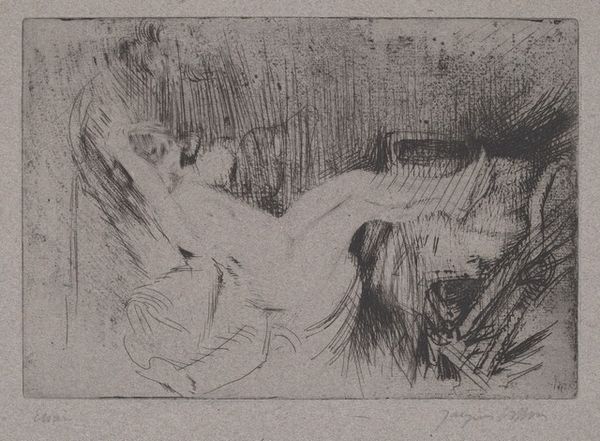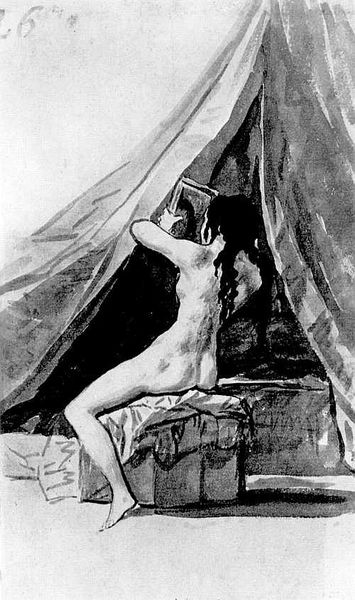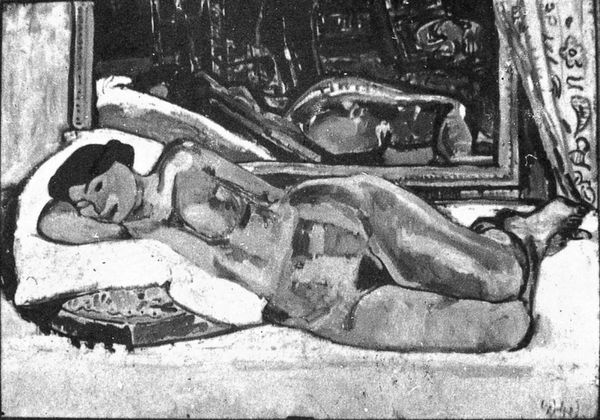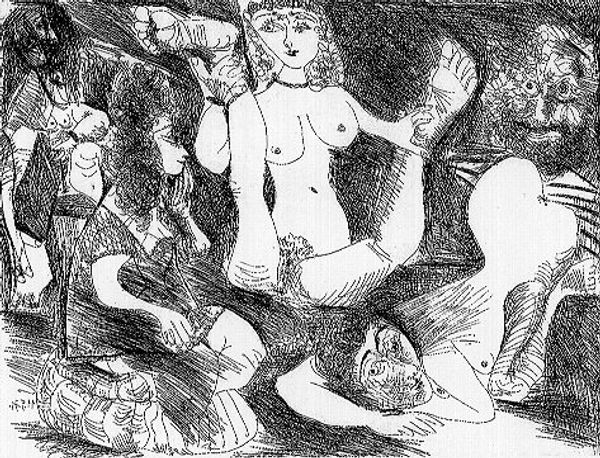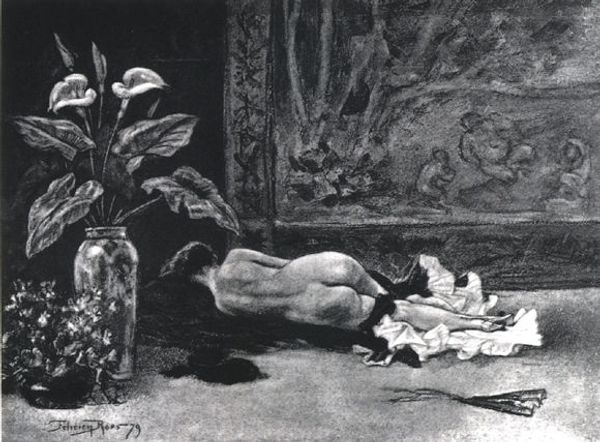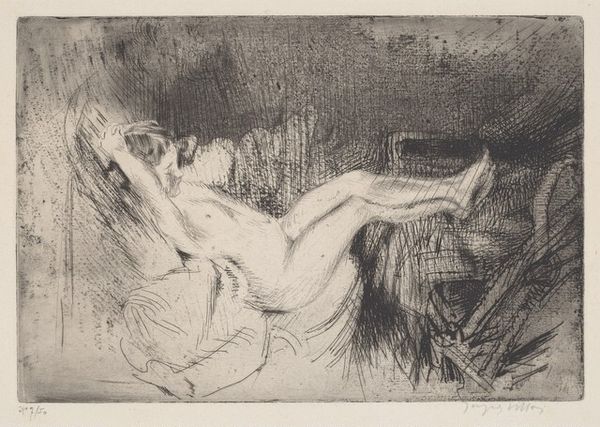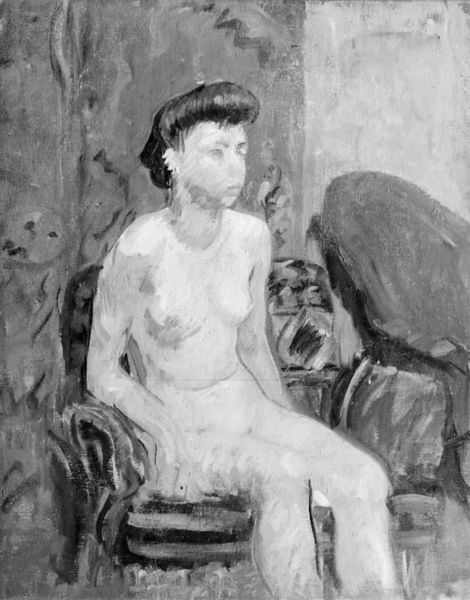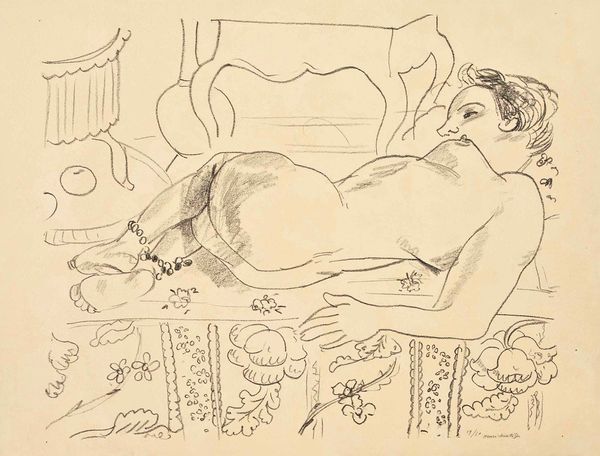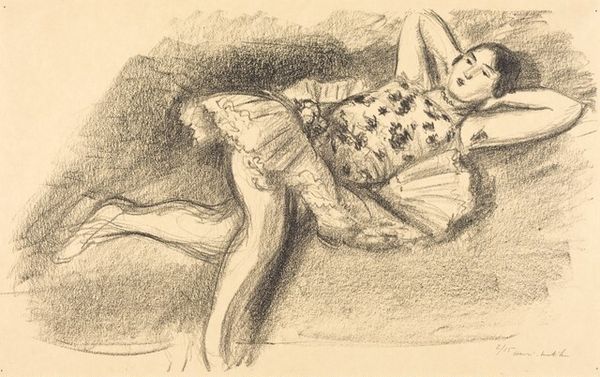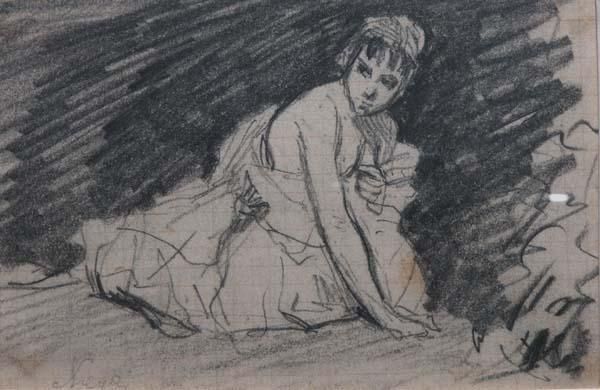
drawing, charcoal
#
portrait
#
drawing
#
allegory
#
figuration
#
cupid
#
romanticism
#
genre-painting
#
charcoal
#
charcoal
#
nude
Dimensions: 12.4 x 17.6 cm
Copyright: Public domain
Curator: Here we have Thomas Sully's charcoal drawing, "Sleeping Venus." Editor: It's striking, isn't it? There's a softness to the form of Venus, almost as if she's dissolving into the shadows. And Cupid hovers above, creating a wonderful tension with his eager pose and upward gaze. Curator: Absolutely. Sully, though known for his portraiture, was clearly engaging with broader allegorical themes here. We see Venus in repose, a traditional subject, but her slumber also hints at ideas about idealized beauty and perhaps even vulnerability within that ideal. Editor: It's the texture of the charcoal that gets me. The artist really utilized a whole tonal range, building volume with smudges and dense, dark lines, then contrasting it with these bare passages. There is the sensuality of the line making you almost feel the texture of skin on paper. Curator: I think that contrast speaks to the romantic era in which Sully was working, celebrating not just ideal form but emotional experience. The allegory extends beyond classical beauty here; it is an active construction, where figures are interpreted in the intersection of representation and subjective feeling. Venus doesn't exist outside that power dynamic. Editor: You make a good point; Sully’s materials also play into that tension. He uses mass-produced charcoal – a humble, widely available material – to render an iconic mythological figure. Does that cheapening of materials, and access, make the overall piece subversive, democratizing beauty or maybe highlighting an accessibility where none had existed before? Curator: Perhaps. That's the fascinating challenge that art and identity raise. When thinking about gender and mythology, it encourages questions about power and subversion. Sully’s use of a classical motif prompts conversations that remain deeply relevant today in an era obsessed with media, beauty, and presentation. Editor: Well, for me, seeing the directness and honesty in the materials speaks volumes. It humanizes even mythological concepts in a way. The work makes you consider it to have more substance precisely because of Sully’s attention to how he worked with his supplies, rather than the other way around. Curator: I see what you mean; the drawing’s physicality adds another layer. Overall, the Venus is less a fixed icon, more an active site where culture and subjective human conditions meet. Editor: Definitely a great one to get the brain ticking on the production of art and it's overall impact. Thanks. Curator: Indeed. Thank you.
Comments
No comments
Be the first to comment and join the conversation on the ultimate creative platform.
